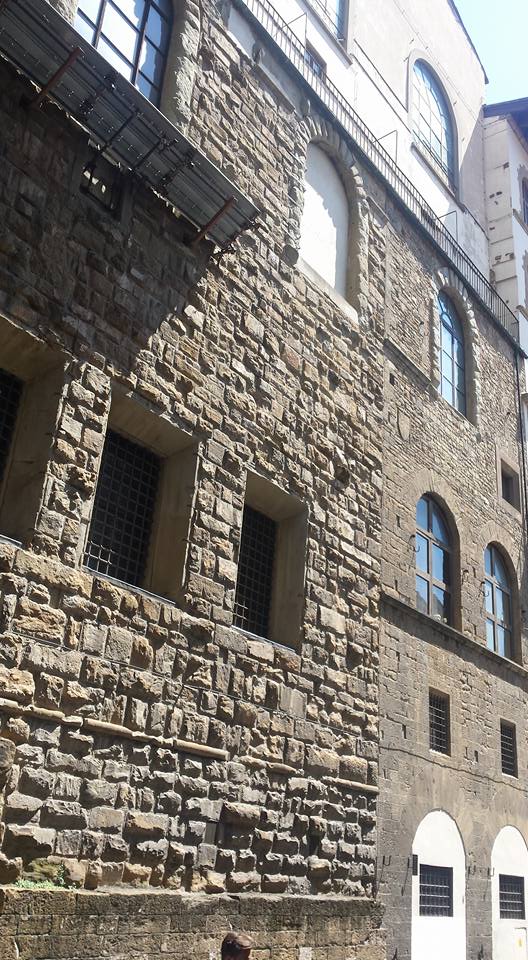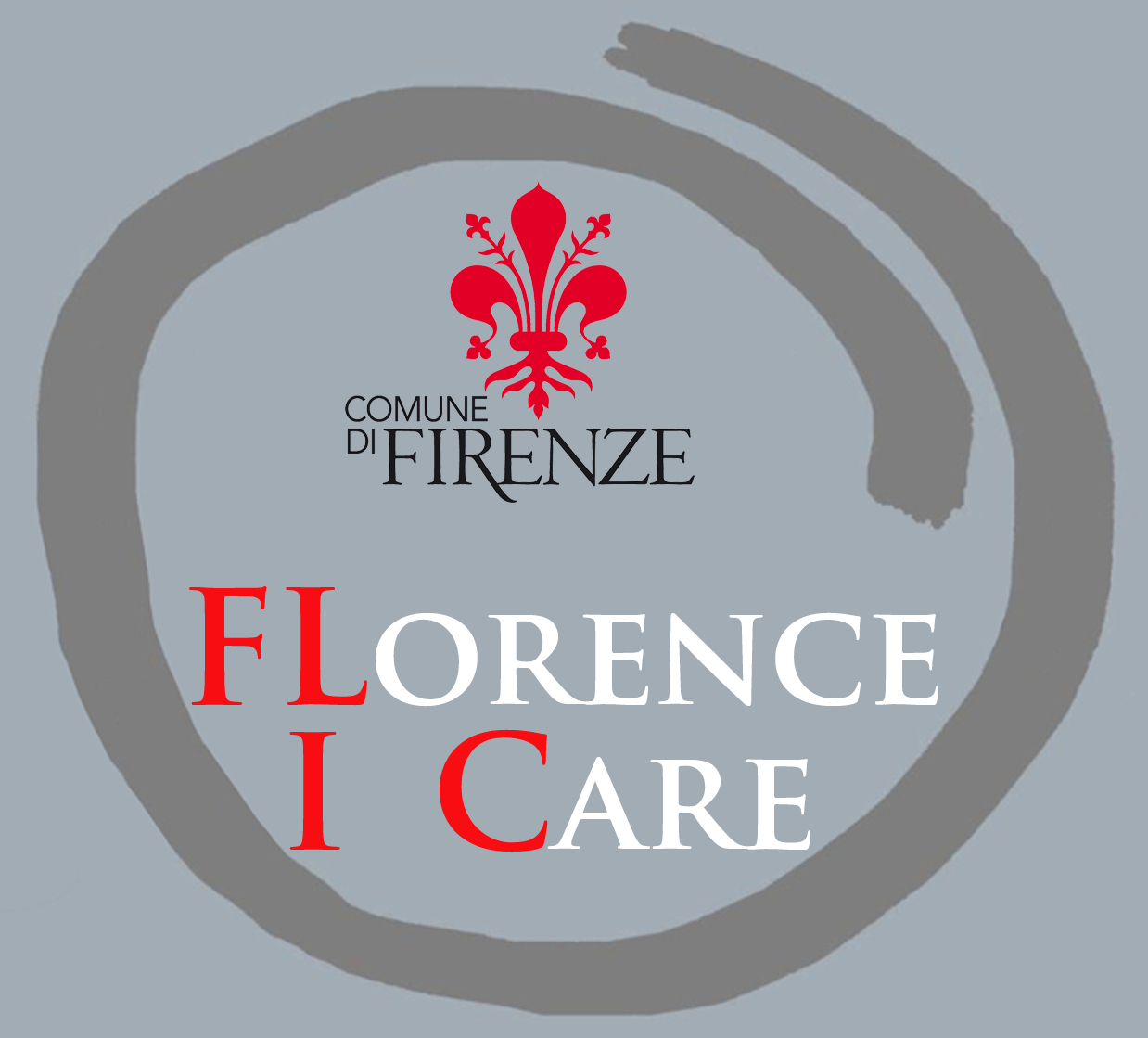PALAZZO VECCHIO VIA DELLA NINNA
RESTAURO SU VIA DELLA NINNA III lotto - RESTORATION ON VIA DELLA NINNA

E quando in Palazzo Vecchio, bello come un'agave di pietra, salii i
gradini consunti, attraversai le antiche stanze, e uscì a ricevermi un
operaio, capo della città, del vecchio fiume, delle case tagliate come in
pietra di luna, io non me ne sorpresi: la maestà del popolo governava.
Pablo Neruda
Palazzo Vecchio rappesenta la migliore sintesi dell'architettura civile trecentesca cittadina ed è uno dei palazzi civici più conosciuti nel mondo.
Palazzo Vecchio represents the best synthesis of 14th century civic town architecture and is one of the most famous civic buildings in the world.
Valore del’intervento:€ 450.000,00
Value of the intervention: € 450.000,00
Durata dei lavori: 360 gg
Duration of works: 360 days
Tipologia Intervento: dopo aver completato i lavori relativamente al restauro del paramento lapideo della facciata su Piazza della Signoria e della Torre di Arnolfo tra il 2003 e il 2004, ed il primo lotto della facciata in esame terminato nel 2011, oggi vi è la necessità di proseguire con il completamento del restauro, con la seconda fase relativa a Via della Ninna.
La cronologia degli interventi, il loro raggruppamento in tre grandi fasi storiche di accrescimento, ma soprattutto, l’inclusione nella cortina muraria esterna di antiche abitazioni, torri e altre costruzioni medievali, permette di comprendere facilmente come ciò possa provocare improvvisi distacchi e importanti linee di fessurazione nella facciata.
La porzione centrale della lunga facciata, della quale andremo a restaurare porzione, è interessata dalla presenza di diffusa erosione, croste nere, deposito superficiale nonché un preoccupante quadro fessurativo localizzato, compreso un distacco di alcune bozze “finte” eseguite probabilmente in periodo ottocentesco.
Type of intervention: after completing the work on the restoration of the stone face of the façade on Piazza della Signoria and Torre di Arnolfo between 2003 and 2004, and the first batch of the façade in question completed in 2011, now there is the need to continue with the completion of the restoration, with the second phase related to Via della Ninna.
The chronology of the interventions, their grouping into three major historical stages of growth, but above all the inclusion of ancient houses, towers and other medieval buildings in the outer wall, allows you to easily understand how this can cause sudden detachment and important cracking lines in the façade.
The central portion of the long façade, of which we are going to restore a portion, is affected by the presence of widespread erosion, black crusts, superficial deposit as well as a worrying localized crack pattern, including a detachment of some "fake" bumps probably executed in the nineteenth century.
Attrattività: cuore pulsante della città è luogo degli uffici pubblici di museo e di eventi cittadini.
Attractiveness: beating heart of the city and place of public offices, museums and the city events.
Notizie storico-artistiche:
L’importanza di tale facciata risiede nel fatto che la stessa permette di leggere chiaramente la stratificazione che, nel corso dei secoli, ha portato alla realizzazione del palazzo così come appare oggi. Partendo da Piazza della Signoria e scendendo verso Via dei Leoni si individuano:
1. Il Nucleo Arnolfiano quale rappresentante della porzione più antica del Palazzo, realizzato con l’impiego di enormi blocchi di pietra forte fiorentina che originano un bozzato maschio e incisivo: questa porzione è datata 1299/1302;
2. Il primo ampliamento e fortificazione realizzata dal Duca d’Atene Gualtieri di Brienne nell’anno 1342. L’accrescimento inglobò le case di alcune famiglie: quella dei Filipeti, la torre e le case degli Amidei, dei Mancini e dei Bolloberti. In questa porzione di facciata si trova il portone che recava l’arme del Duca e accanto una “porticina”, da lui voluta, per uscire dal palazzo in modo indipendente. L’operato del Duca non fu però apprezzato dai fiorentini tanto che le aperture furono prima dotate di muraglia protettiva esterna e antiporta difensiva poi demolite in seguito alla cacciata dello stesso da Firenze.
3. Il secondo ampliamento, realizzato in epoche successive fino alla revisione complessiva dell’Architetto Battista di Marco del Tasso (succeduto nel 1555 dal Vasari) che, in vista dell’ingresso della famiglia ducale nel Palazzo avvenuto il 15 Maggio 1540, raggiunse, in questa porzione, validi risultati formali grazie a un’importante fusione di stili. Pagamenti fatti all’Opera di Santa Maria del Fiore relativi agli anni 1552 e 1553 testimoniano l’acquisto di finestre in pietra bigia e in pietra serena, di davanzali nonché pagamenti relativi a lavori di scalpellino, di falegname, d’intagliatore e di tornitore che serviranno per la realizzazione della magnifica e maestosa gronda lignea del Terrazzo di Saturno ove si ha la riprova della maturità stilistica raggiunta in quegli anni dalle botteghe artigianali fiorentine.
Questa porzione venne ultimata dall’Architetto Vasari che, nello specifico, si occupò delle trasformazioni volumetriche degli ambienti attraverso il rialzamento di vari solai mediante la creazione di cassettonati necessari per aumentare l’altezza interna dei vani senza modificare le coperture. Del suo operato non sono però documentati interventi che attestino modifiche di facciata.
Historical-artistic notes:
The importance of this façade lies in the fact that it allows us to clearly read the stratification that, over the centuries, led to the construction of the building as it appears today. Starting from Piazza della Signoria and descending towards Via dei Leoni we can find:
1. The Arnolfian nucleus as representative of the most ancient part of the Palace, made with the use of huge blocks of Florentine grey sandstone that originate an incisive ashlar work: this portion is dated 1299/1302;
2. The first enlargement and fortification realized by the Duke of Athens Gualtieri di Brienne in the year 1342. The growth included the houses of some families: that of the Filipetis, the tower and the houses of the Amideis, of the Mancinis and Bollobertis. In this portion of the façade there is the main door which bore the coat of arms of the Duke and next a "little door", which he wanted, to exit the building independently. The work of the Duke, however, was not appreciated by the Florentines, so that the openings were first equipped with external and defensive frontispiece protective walls, that were then demolished after his expulsion from Florence.
3. The second extension, realized in successive epochs up to the overall revision of the Architect Battista di Marco del Tasso (succeeded in 1555 by Vasari) who, in view of the entrance of the ducal family in the Palace on 15 May 1540, reached, in this portion, valid formal results thanks to an important fusion of styles. Payments made to the Opera of Santa Maria del Fiore relating to the years 1552 and 1553 testify to the purchase of windows in gray stone and sandstone, window sills as well as payments relating to the work of stonemason, carpenter, carver and turner that served for the realization of the magnificent and majestic wooden eaves of the Saturn Terrace, where there is proof of the stylistic maturity reached in those years by Florentine artisan workshops.
This portion was completed by the architect Vasari who, in particular, took care of the volumetric transformations of the rooms through the raising of various floors through the creation of coffered boxes necessary to increase the interior height of the rooms without modifying the roofing. However, there are no documented interventions of his work that demonstrate façade changes.
